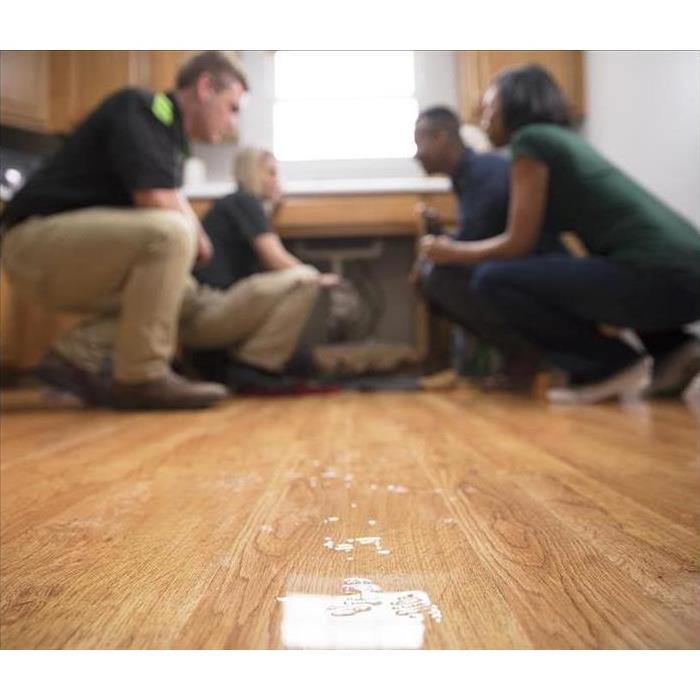Deciphering Water Damage: Clean, Grey, and Black Water
1/22/2020 (Permalink)
 Whether water damage in your home or business is caused by clean, black, or gray water, SERVPRO can make it “Like it never even happened!”
Whether water damage in your home or business is caused by clean, black, or gray water, SERVPRO can make it “Like it never even happened!”
Water damage is water damage, plain and simple, right? Not exactly.
In the restoration industry, there are three categories of water as defined by the Institute of Inspection, Cleaning and Remediation Certification (IICRC): clean water, gray water, and black water.
Clean water, also referred to as Category 1, is water that comes from a sanitary source such as rainwater or snowmelt, a faucet, or a broken pipe or toilet tank, and does not pose an immediate health risk to a structure’s inhabitants. When Category 1 water losses are caught and dried out quickly, the structure is much less likely to require repairs. If left for 48 hours or more, however, clean water can turn to gray water and require more extensive mitigation.
Gray water, which causes Category 2 water losses, includes dirty water from washing machines, dishwashers, aquariums, or shower or sink drains. Water from these sources is considered gray water because it contains significant levels of contamination from bacteria, mold, or chemicals and may pose health risks to a structure’s inhabitants. Category 2 water losses are likely to require the removal of soft materials such carpet pad, as they’re prone to bacterial growth. As with clean water, gray water can become black water if left for 48 hours or longer.
Black water, or water in a Category 3 loss, comes from sewage back-ups or floodwaters. The contaminants found in black water (bacteria, mold, viruses) are known to cause diseases, and therefore Category 3 water losses pose serious health risks to a structure’s inhabitants. The IICRC says that black water causes “grossly unsanitary” conditions and for that reason, Category 3 water losses usually require the removal of all affected materials within a structure.
When water damage occurs, the source of the water determines several steps of the mitigation process, from how much personal protective equipment (PPE) mitigation technicians should wear to whether materials should simply be dried out or removed entirely. Whatever the category of water, though, SERVPRO of Talladega, Clay & Randolph County has the tools to make water damages “Like it never even happened.”





 24/7 Emergency Service
24/7 Emergency Service